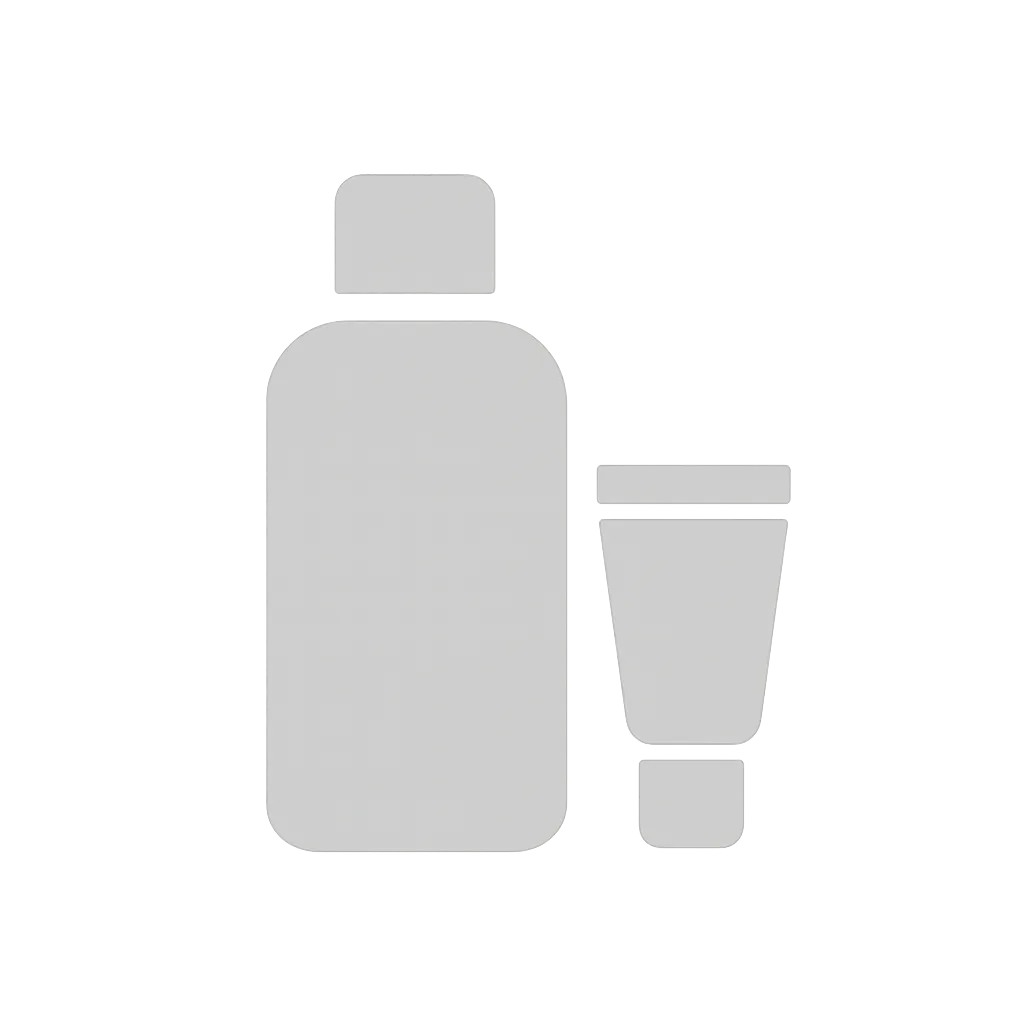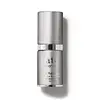What's inside
What's inside
 Key Ingredients
Key Ingredients

 Benefits
Benefits

 Concerns
Concerns

 Ingredients Side-by-side
Ingredients Side-by-side

Water
Skin ConditioningGlycerin
HumectantDicaprylyl Carbonate
EmollientTribehenin PEG-20 Esters
EmollientDimethicone
EmollientSqualane
EmollientCetearyl Alcohol
EmollientC12-15 Alkyl Benzoate
AntimicrobialCyclopentasiloxane
EmollientOctyldodecanol
EmollientButylene Glycol
HumectantTetrahexyldecyl Ascorbate
AntioxidantCaprylic/Capric Triglyceride
MaskingAlbizia Julibrissin Bark Extract
MaskingCaesalpinia Spinosa Fruit Extract
Skin ProtectingCyclohexasiloxane
EmollientBisabolol
MaskingGeranylgeranylisopropanol
Skin ConditioningCaffeine
Skin ConditioningPentylene Glycol
Skin ConditioningTribehenin
EmollientDarutoside
Skin ConditioningPalmitoyl Hexapeptide-12
Skin ConditioningPalmitoyl Tripeptide-1
Skin ConditioningAdenosine
Skin ConditioningPalmitoyl Tetrapeptide-7
Skin ConditioningHydrogenated Phosphatidylcholine
EmulsifyingPEG-8
HumectantNarcissus Tazetta Bulb Extract
AstringentRibes Nigrum Seed Oil
EmollientCarbomer
Emulsion StabilisingCardiospermum Halicacabum Flower/Leaf/Vine Extract
Skin ConditioningCeramide Ng
Skin ConditioningRosmarinus Officinalis Leaf Extract
AntimicrobialKappaphycus Alvarezii Extract
Skin ConditioningHelianthus Annuus Seed Oil
EmollientSchisandrin
BleachingLitchi Chinensis Fruit Extract
Skin ConditioningHydrogenated Lecithin
EmulsifyingSodium Methyl Stearoyl Taurate
CleansingChlorella Vulgaris Extract
Skin ConditioningHydroxyphenyl Propamidobenzoic Acid
Skin ConditioningPEG-10 Phytosterol
EmulsifyingHelianthus Annuus Seed Oil Unsaponifiables
EmollientGlyceryl Acrylate/Acrylic Acid Copolymer
HumectantXanthan Gum
EmulsifyingPolysorbate 20
EmulsifyingChlorphenesin
AntimicrobialHydroxyacetophenone
AntioxidantSodium Hydroxide
BufferingWater, Glycerin, Dicaprylyl Carbonate, Tribehenin PEG-20 Esters, Dimethicone, Squalane, Cetearyl Alcohol, C12-15 Alkyl Benzoate, Cyclopentasiloxane, Octyldodecanol, Butylene Glycol, Tetrahexyldecyl Ascorbate, Caprylic/Capric Triglyceride, Albizia Julibrissin Bark Extract, Caesalpinia Spinosa Fruit Extract, Cyclohexasiloxane, Bisabolol, Geranylgeranylisopropanol, Caffeine, Pentylene Glycol, Tribehenin, Darutoside, Palmitoyl Hexapeptide-12, Palmitoyl Tripeptide-1, Adenosine, Palmitoyl Tetrapeptide-7, Hydrogenated Phosphatidylcholine, PEG-8, Narcissus Tazetta Bulb Extract, Ribes Nigrum Seed Oil, Carbomer, Cardiospermum Halicacabum Flower/Leaf/Vine Extract, Ceramide Ng, Rosmarinus Officinalis Leaf Extract, Kappaphycus Alvarezii Extract, Helianthus Annuus Seed Oil, Schisandrin, Litchi Chinensis Fruit Extract, Hydrogenated Lecithin, Sodium Methyl Stearoyl Taurate, Chlorella Vulgaris Extract, Hydroxyphenyl Propamidobenzoic Acid, PEG-10 Phytosterol, Helianthus Annuus Seed Oil Unsaponifiables, Glyceryl Acrylate/Acrylic Acid Copolymer, Xanthan Gum, Polysorbate 20, Chlorphenesin, Hydroxyacetophenone, Sodium Hydroxide
Water
Skin ConditioningCyclopentasiloxane
EmollientC12-15 Alkyl Benzoate
AntimicrobialPhenyl Trimethicone
Skin ConditioningGlycerin
HumectantCyclotetrasiloxane
EmollientPPG-12/Smdi Copolymer
EmollientTheobroma Grandiflorum Seed Butter
Skin ConditioningCetyl PEG/PPG-10/1 Dimethicone
EmulsifyingDimethicone
EmollientMicrocrystalline Wax
Emulsion StabilisingSodium Chloride
MaskingPolysilicone-11
Acetyl Hexapeptide-8
HumectantCucumis Sativus Fruit Extract
EmollientTribehenin
EmollientCetyl Esters
EmollientSodium PCA
HumectantHydrolyzed Rice Protein
Skin ConditioningCeramide Ng
Skin ConditioningPhospholipids
Skin ConditioningTrehalose
HumectantGlycine Soja Protein
EmulsifyingTocopheryl Acetate
AntioxidantGlycine
BufferingLysine
Skin ConditioningPalmitoyl Hexapeptide-12
Skin ConditioningPalmitoyl Tripeptide-1
Skin ConditioningPalmitoyl Tetrapeptide-7
Skin ConditioningAscorbyl Palmitate
AntioxidantPEG-10 Phytosterol
EmulsifyingRetinyl Palmitate
Skin ConditioningProline
Skin ConditioningButylene Glycol
HumectantDimethiconol
EmollientEthylhexyl Cocoate
EmollientPEG/PPG-18/18 Dimethicone
EmulsifyingUrea
BufferingEthylhexylglycerin
Skin ConditioningCaprylyl Glycol
EmollientCarbomer
Emulsion StabilisingHexylene Glycol
EmulsifyingDipeptide Diaminobutyroyl Benzylamide Diacetate
Skin ConditioningHydrogenated Lecithin
EmulsifyingHydroxycetyl Hydroxyethyl Dimonium Chloride
Polysorbate 20
EmulsifyingSuperoxide Dismutase
AntioxidantXanthan Gum
EmulsifyingSalicylic Acid
MaskingSorbic Acid
PreservativeCitric Acid
BufferingLecithin
EmollientGlycosphingolipids
EmollientPhenoxyethanol
PreservativeSodium Benzoate
MaskingPotassium Sorbate
PreservativeSodium Dextran Sulfate
Gel FormingPentaerythrityl Tetra-Di-T-Butyl Hydroxyhydrocinnamate
AntioxidantWater, Cyclopentasiloxane, C12-15 Alkyl Benzoate, Phenyl Trimethicone, Glycerin, Cyclotetrasiloxane, PPG-12/Smdi Copolymer, Theobroma Grandiflorum Seed Butter, Cetyl PEG/PPG-10/1 Dimethicone, Dimethicone, Microcrystalline Wax, Sodium Chloride, Polysilicone-11, Acetyl Hexapeptide-8, Cucumis Sativus Fruit Extract, Tribehenin, Cetyl Esters, Sodium PCA, Hydrolyzed Rice Protein, Ceramide Ng, Phospholipids, Trehalose, Glycine Soja Protein, Tocopheryl Acetate, Glycine, Lysine, Palmitoyl Hexapeptide-12, Palmitoyl Tripeptide-1, Palmitoyl Tetrapeptide-7, Ascorbyl Palmitate, PEG-10 Phytosterol, Retinyl Palmitate, Proline, Butylene Glycol, Dimethiconol, Ethylhexyl Cocoate, PEG/PPG-18/18 Dimethicone, Urea, Ethylhexylglycerin, Caprylyl Glycol, Carbomer, Hexylene Glycol, Dipeptide Diaminobutyroyl Benzylamide Diacetate, Hydrogenated Lecithin, Hydroxycetyl Hydroxyethyl Dimonium Chloride, Polysorbate 20, Superoxide Dismutase, Xanthan Gum, Salicylic Acid, Sorbic Acid, Citric Acid, Lecithin, Glycosphingolipids, Phenoxyethanol, Sodium Benzoate, Potassium Sorbate, Sodium Dextran Sulfate, Pentaerythrityl Tetra-Di-T-Butyl Hydroxyhydrocinnamate
 Reviews
Reviews

Ingredients Explained
These ingredients are found in both products.
Ingredients higher up in an ingredient list are typically present in a larger amount.
Butylene Glycol (or BG) is used within cosmetic products for a few different reasons:
Overall, Butylene Glycol is a safe and well-rounded ingredient that works well with other ingredients.
Though this ingredient works well with most skin types, some people with sensitive skin may experience a reaction such as allergic rashes, closed comedones, or itchiness.
Learn more about Butylene GlycolC12-15 Alkyl Benzoate is made up of Benzoic Acid and long chain alcohols. It has a low molecular weight.
C12-15 Alkyl Benzoate is an emollient and texture enhancer. Due to its solubility, it is often used in sunscreens to help evenly distribute active ingredients.
As an emollient, C12-15 Alkyl Benzoate helps soften and hydrate your skin. Emollients create a film on your skin that traps moisture within.
This ingredient has been reported to cause eye irritation.
Learn more about C12-15 Alkyl BenzoateCarbomer is a polymer of acrylic acid. Its main role is to create a gel consistency.
A high amount of carbomer can cause pilling or balling up of products. Don't worry, most products contain 1% or less of carbomer.
Ceramide NG is a type of Ceramide. The NG stands for a sphinganine base.
Ceramides are intercellular lipids naturally found in our skin that bonds dead skin cells together to create a barrier. They are known for their ability to hold water and thus are a great ingredient for dry skin.
Ceramides are an important building block for our skin barrier. A stronger barrier helps the skin look more firm and hydrated. By bolstering the skin ceramides act as a barrier against irritating ingredients. This can help with inflammation as well.
If you would like to eat ceramides, sweet potatoes contain a small amount.
Read more about other common types of ceramides here:
Ceramide AP
Ceramide EOP
Ceramide NP
Cyclopentasiloxane, or D5, is a silicone used to improve texture of products and trap moisture.
D5 is considered lightweight and volatile. Volatile means it evaporates quickly after application. Once evaporated, D5 leaves a thin barrier that helps keep skin hydrated.
It is also an emollient. Emollients help soften the skin and prevent water loss. Silicones create a silky texture in products. D5 helps other ingredients become more spreadable.
Studies show D5 is safe to use in skincare products. We recommend speaking with a skincare professional if you have concerns.
Learn more about CyclopentasiloxaneDimethicone is a type of synthetic silicone created from natural materials such as quartz.
What it does:
Dimethicone comes in different viscosities:
Depending on the viscosity, dimethicone has different properties.
Ingredients lists don't always show which type is used, so we recommend reaching out to the brand if you have questions about the viscosity.
This ingredient is unlikely to cause irritation because it does not get absorbed into skin. However, people with silicone allergies should be careful about using this ingredient.
Note: Dimethicone may contribute to pilling. This is because it is not oil or water soluble, so pilling may occur when layered with products. When mixed with heavy oils in a formula, the outcome is also quite greasy.
Learn more about DimethiconeGlycerin is already naturally found in your skin. It helps moisturize and protect your skin.
A study from 2016 found glycerin to be more effective as a humectant than AHAs and hyaluronic acid.
As a humectant, it helps the skin stay hydrated by pulling moisture to your skin. The low molecular weight of glycerin allows it to pull moisture into the deeper layers of your skin.
Hydrated skin improves your skin barrier; Your skin barrier helps protect against irritants and bacteria.
Glycerin has also been found to have antimicrobial and antiviral properties. Due to these properties, glycerin is often used in wound and burn treatments.
In cosmetics, glycerin is usually derived from plants such as soybean or palm. However, it can also be sourced from animals, such as tallow or animal fat.
This ingredient is organic, colorless, odorless, and non-toxic.
Glycerin is the name for this ingredient in American English. British English uses Glycerol/Glycerine.
Learn more about GlycerinHydrogenated Lecithin is created from the hydrogenation of lecithin (a group of phospholipids). Hydrogenation is a chemical reaction between hydrogen and another element.
This ingredient is an emollient and emulsifier. As an emollient, it helps soften skin by trapping moisture within. As an emulsifier, it prevents oil and water ingredients from separating.
Palmitoyl Hexapeptide-12 is a synthetic peptide made with glycine, histidine, lysine, and palmitic acid.
The sequence of this peptide matches that of elastin, a key protein that plays a role in how firm our skin is.
Due to its palmitic acid base, this ingredient may not be fungal-acne safe.
Learn more about Palmitoyl Hexapeptide-12Palmitoyl Tetrapeptide-7 (formerly Palmitoyl Tetrapeptide-3) is a lab-made peptide with anti-inflammatory and skin-repairing benefits. It's made up of four amino acids (glycine, glutamine, proline, and arginine) and palmitic acid (which helps it penetrate skin more effectively).
This ingredient helps reduce inflammation by limiting the production of interleukin-6 (IL-6), a chemical that triggers inflammatory responses, particularly after UV exposure.
Less inflammation = slower collagen breakdown and a longer-lasting, youthful appearance.
Palmitoyl Tetrapeptide-7 also stimulates collagen production and supports a healthier skin barrier.
Over time, this can improve skin firmness, hydration, and reduce the appearance of fine lines. It’s commonly paired with Palmitoyl Tripeptide-1 in the well-known Matrixyl 3000 complex for enhanced anti-aging effects.
This ingredient has been shown to be effective and safe in cosmetic use and you'll typically find it in small amounts (less than 0.01%).
Due to its palmitic acid base, it may not be safe for Malassezia folliculitis.
Read more about other common types of peptides here:
Learn more about Palmitoyl Tetrapeptide-7Palmitoyl Tripeptide-1 is also known as pal-GHK. It is made up of 3 amino acids and palmitic acid, a fatty acid that helps it absorb into skin more easily.
This peptide is as a signal peptide, meaning it tells the skin to produce more collagen. Collagen is the key protein that helps form the skin's structure and keep it plump, firm, and hydrated.
By boosting collagen production, this ingredient supports a stronger skin barrier and helps reduce the appearance of wrinkles.
You'll most likely see this ingredient paired with Palmitoyl Tetrapeptide-7 in the well-known Matrixyl 3000 complex. While results from in-house testing should be viewed cautiously, this peptide duo is among the most studied and widely used in modern skincare.
Due to its palmitic acid base, this ingredient may not be safe for Malassezia folliculitis.
Read more about other common types of peptides here:
Learn more about Palmitoyl Tripeptide-1We don't have a description for PEG-10 Phytosterol yet.
Polysorbate 20 is made by combining ethoxylation of sorbitan, ethylene oxide, and lauric acid. It is a mild cleansing agent, surfactant, and emulsifier.
As a surfactant, it helps collect dirt and oils for washing. Emulsifiers prevent oils and water from separating.
Polysorbate 20 also adds scent to a product. Since it is made using sorbitol, it has a sweet scent. Sorbitol can also be found in fruits such as apples and peaches.
The lauric acid used to create Polysorbate 20 is often derived from coconuts.
Polysorbate 20 may not be fungal acne safe.
Learn more about Polysorbate 20Tribehenin comes from glycerin and behenic acid.
It is used as an emollient, or moisturizer. Emollients form a thin barrier on skin to prevent moisture from escaping.
This ingredient may not be Malassezia folliculitis, or fungal-acne safe.
Learn more about TribeheninWater. It's the most common cosmetic ingredient of all. You'll usually see it at the top of ingredient lists, meaning that it makes up the largest part of the product.
So why is it so popular? Water most often acts as a solvent - this means that it helps dissolve other ingredients into the formulation.
You'll also recognize water as that liquid we all need to stay alive. If you see this, drink a glass of water. Stay hydrated!
Learn more about WaterXanthan gum is used as a stabilizer and thickener within cosmetic products. It helps give products a sticky, thick feeling - preventing them from being too runny.
On the technical side of things, xanthan gum is a polysaccharide - a combination consisting of multiple sugar molecules bonded together.
Xanthan gum is a pretty common and great ingredient. It is a natural, non-toxic, non-irritating ingredient that is also commonly used in food products.
Learn more about Xanthan Gum